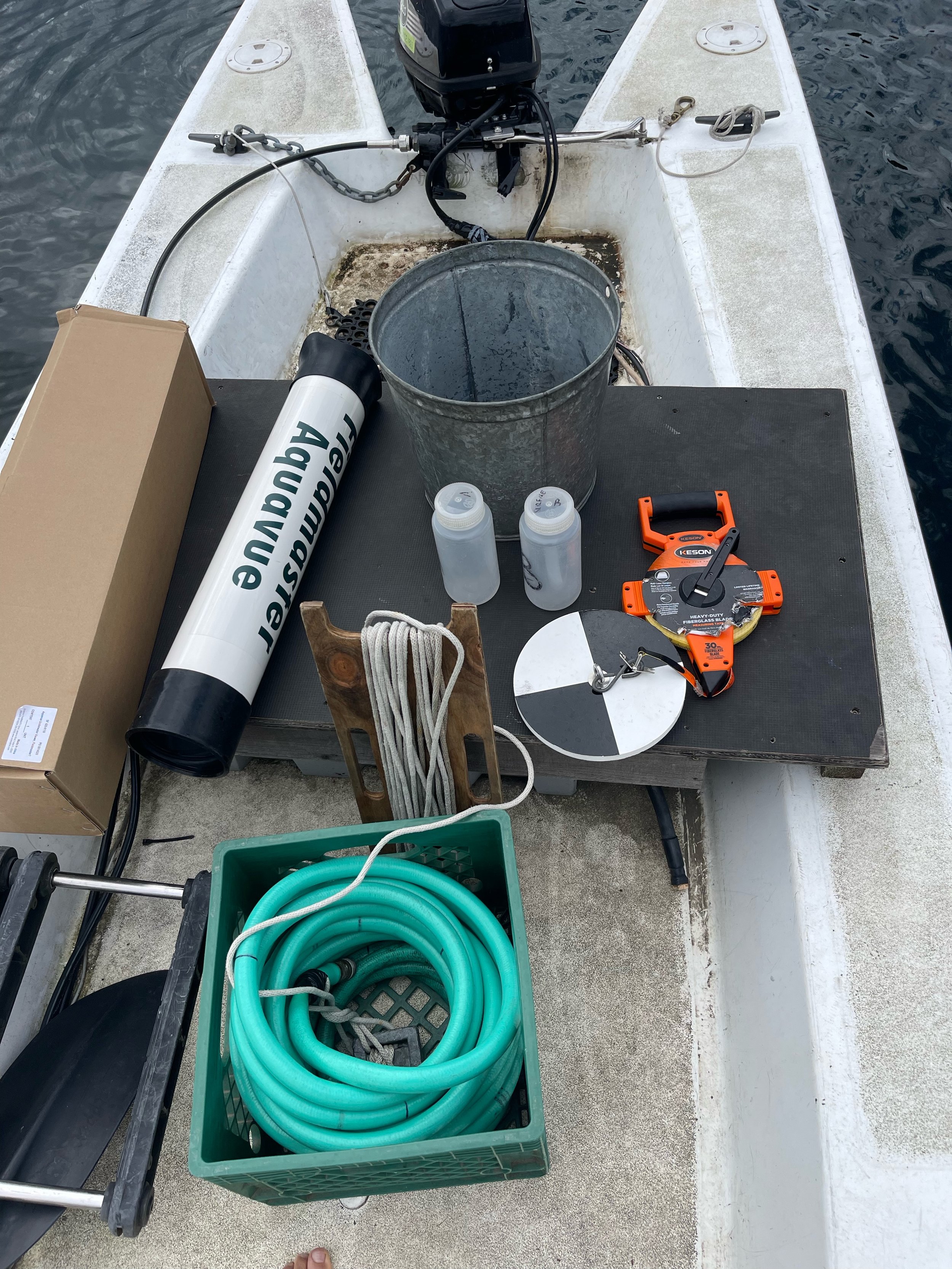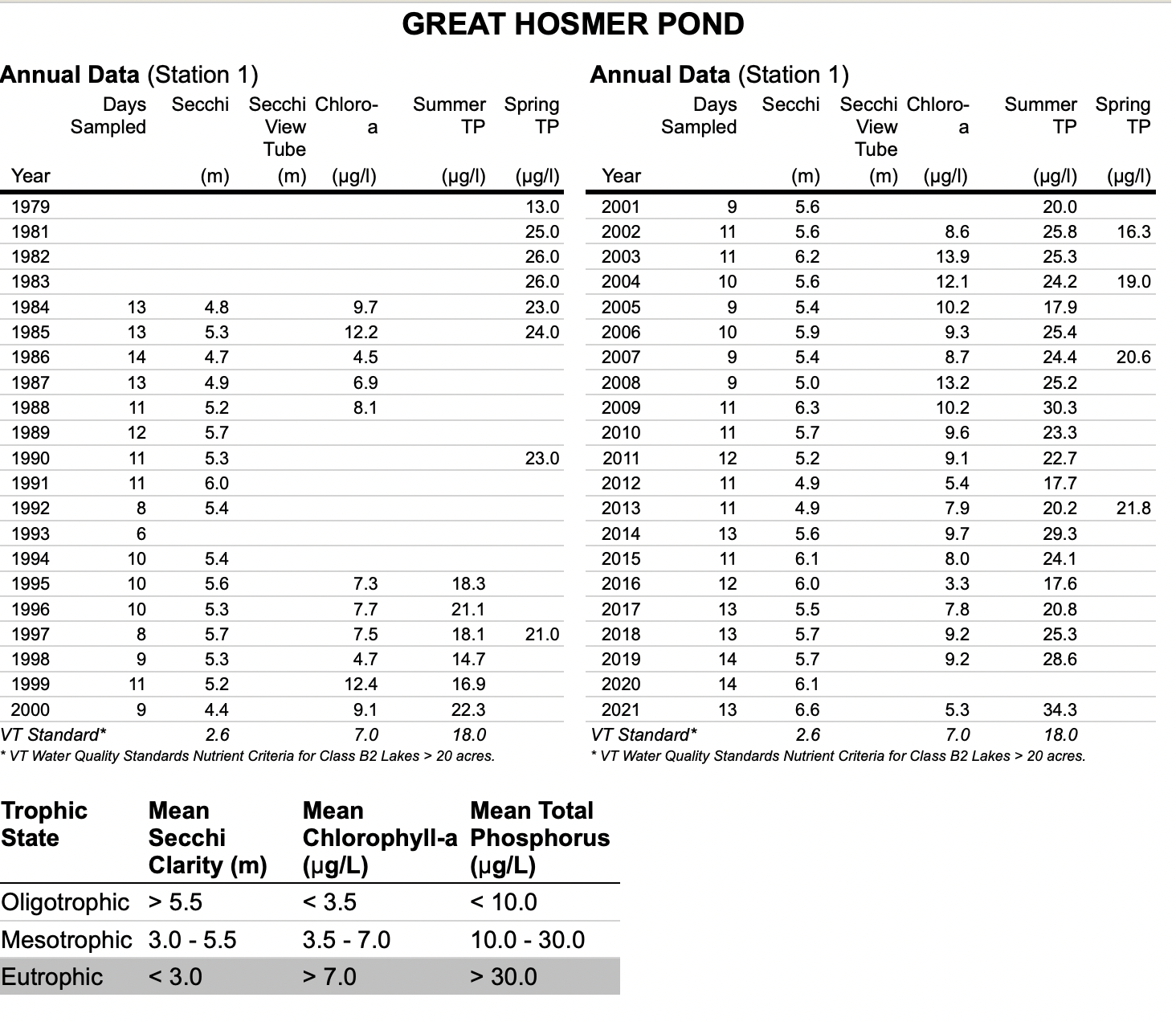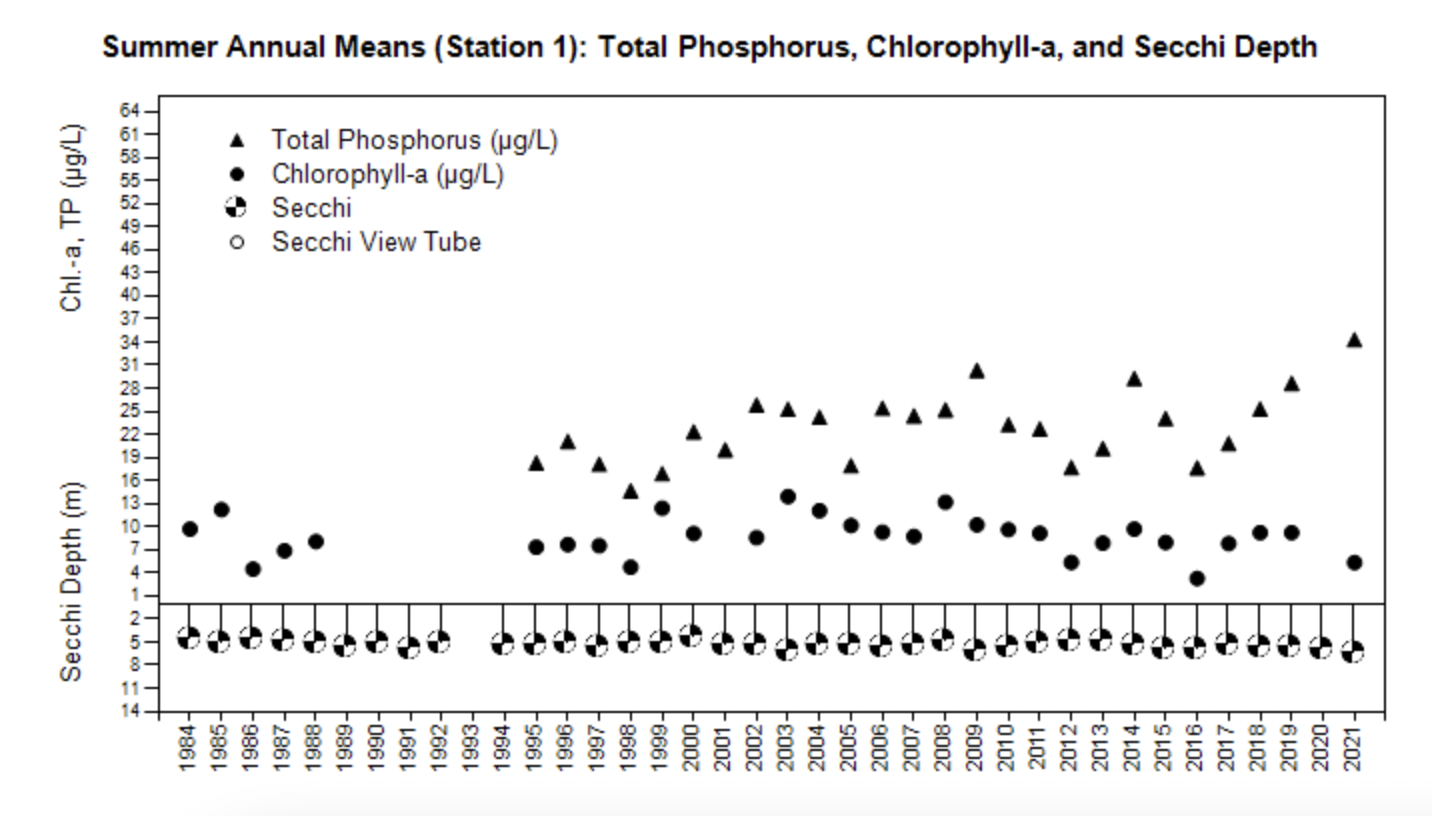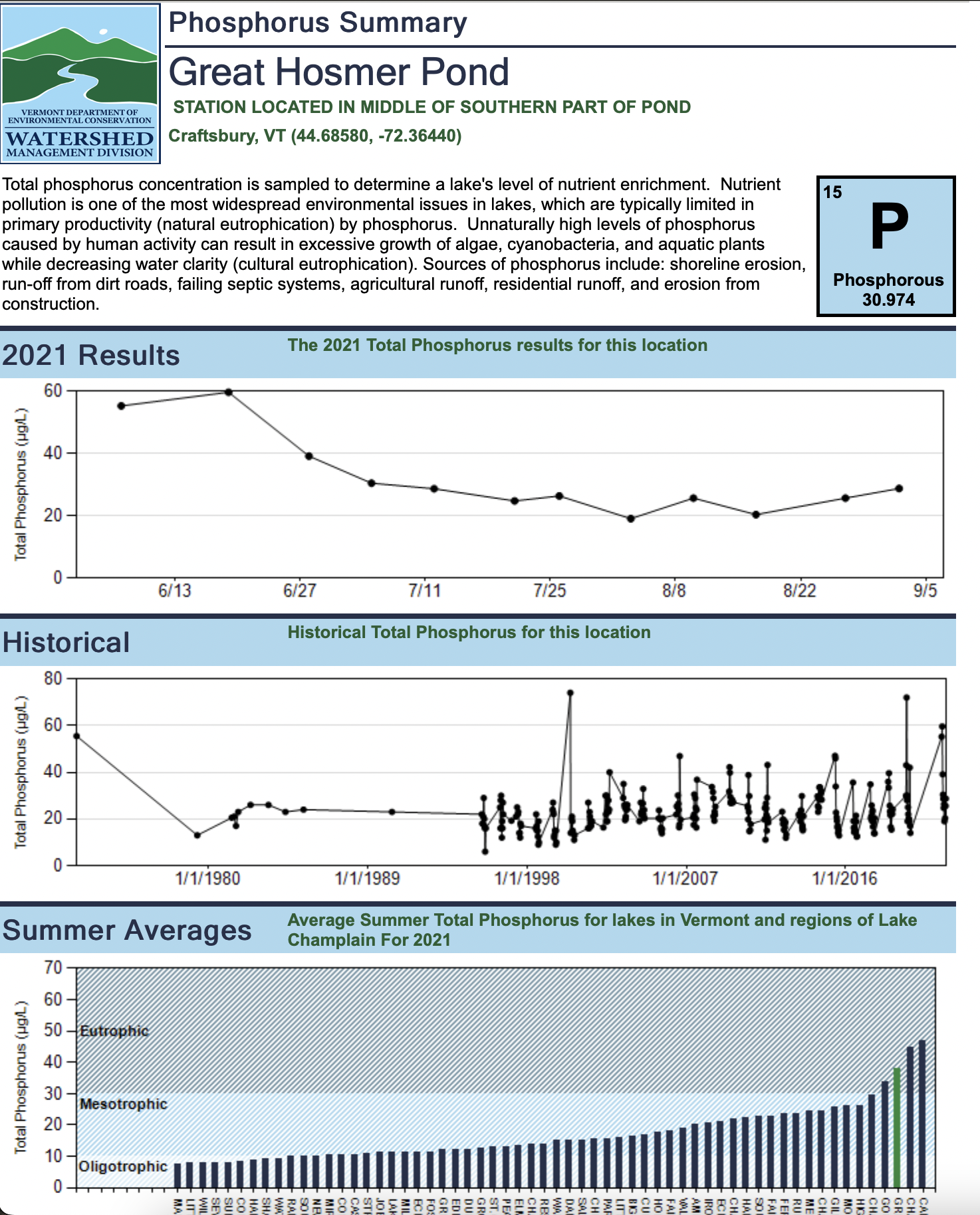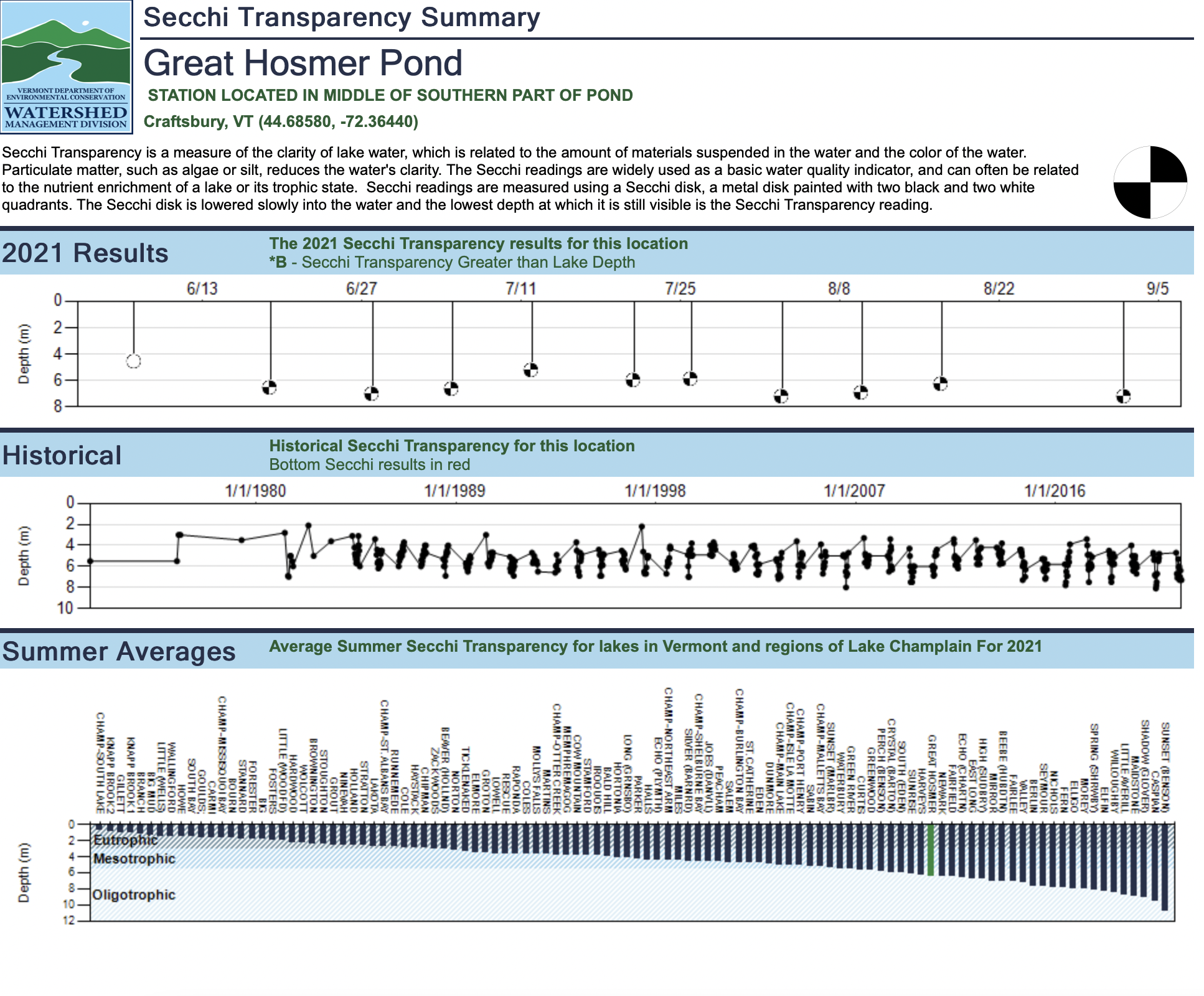Volunteer Lay Monitoring of Big Hosmer Pond at the Center
The author performing her monitoring duties.
During your time as a guest of the Center you might have noticed a couple Green Racing Project (GRP) athletes at the picnic table next to the office filling graduated cylinders and otherwise looking like they are attending a chemistry lab. These athletes are taking lake water samples for the Vermont State Lay Monitoring Program.
Lay monitoring, started by John Broadhead, has been happening at the COC since 1984, although the GRP did not get involved until much later, around 2010. The goal of the VT Lay Monitoring Program is to “establish baseline water quality conditions, track long-term nutrient enrichment and asses monitoring data following Vermont Water Quality Standards, and to teach lakeshore homeowners and lake users about lake ecology.” Participants test lakes for water clarity, algae growth signified by chlorophyll-a levels, and nutrient enrichment signified by phosphorus levels. Founded in 1979, the LMP program relies on volunteer lay monitors around the state to conduct regular lake sampling on their local lake or pond. Currently there are more than 100 inland lakes and 40 Lake Champlain testing stations being monitored. At the Craftsbury Outdoor Center we are monitoring Great Hosmer Pond, the lake that is used by scullers, swimmers, anglers and paddlers throughout the summer. There is one station in the larger portion of the lake south of the narrow-most portion of the lake from where we gather data.
What goes into the process of lay monitoring? Well, whoever oversees lay monitoring for a given summer (this year it was Kelsey Dickinson, Luke Rein, and Margie Freed) takes a boat out to the station site. They bring a few items: secchi disc, sample hose, viewfinder, and various sampling containers.
The tools of the monitoring trade.
A secchi disc.
First, they test water clarity by lowering the secchi disc into the water and averaging the depth at which one can see the disc with either the viewfinder or by naked eye. Depending on how sunny it is, how rainy or stormy it has been, or how windy it is that day, the distance of the secchi can vary depending on how much sediment might be stirred up and the amount of light it reflects.
We use the secchi depth to determine the depth we take the water sample at by, which is 2x the distance that the secchi is visible with a maximum of 10 meters. To take the water sample we have a garden hose that acts as a “core sample” through all the various layers of water to that depth that we lower into the water and then empty into a bucket. Of course, we are not able to separate the layers when we process the sample, but the idea is that we essentially get an average of the layers. We also take a surface sample in a different bottle.
To process the sample, we filter 100ml of both through a filter that captures chlorophyll levels and fill a small vial with the sample that will be processed for phosphorus. We don’t analyze any of the samples ourselves and instead an employee from the state comes and picks them up once every couple of weeks. Chlorophyll and phosphorus help the state measure nutrient pollution in the lake. Vermont is required by the U.S. Clean Water Act to track nutrient enrichment. Agriculture, human-caused erosion, and other types of human activity can leak phosphorus into the watershed, which can cause excessive growth of algae, cyanobacteria, and other harmful aquatic plants such as milfoil.
This excess of phosphorus is called cultural eutrophication, as opposed to natural eutrophication, which limits the growth of these organisms by limiting phosphorus availability. In the winter this excess of organic matter sinks to the bottom of the lake, building up sediment and decreasing oxygen availability which further accelerates lake changes. This human-driven process decreases water clarity and can lower the water quality of the lake so much that it interferes with recreational activities such as boating, fishing, and swimming.
Clean water is appreciated by both human and wild users of Big Hosmer Pond.
Why is this important? It is an important value of the Outdoor Center to be good environmental stewards within our community and the data obtained from our samples is important for the state of Vermont when they assess surface and groundwater quality. This data will help us protect the quality of our water by alerting and allowing us to intervene if values start to skew in a way that is dangerous to the health of the lake and the watershed around it. It also allows us to understand the impact of human activity in the area, because lake health is a function of a greater watershed which is incredibly sensitive to human activity. To learn more about the Vermont Lay Monitoring Program you can visit this website. They have a great description of the program as well as lots of ways to visualize the data being taken.


